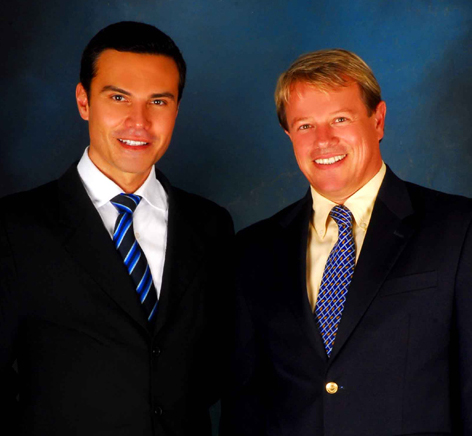

PART ONE
I am always wondering how in the world the Online Travel Agencies (OTAs) like Expedia, Travelocity, Orbitz and others price their inventory. I mean how complicated must those algorithms be? And do they always work?
I can't imagine that they do, there's still too much unsold inventory in hotels worldwide; why don't they just lower their prices to fill all their rooms?
The answer is simple: they don't know... and their software doesn't know just how low their prices should go to fill the rooms. And I believe that up until now, they have consistently defaulted to leaving the room empty if they couldn't get $100 per night or $50, whatever. But they certainly wouldn't go to $20 or $10.
It's the same riddle I feel about airplanes departing with empty seats; why don't they sell those unused seats for 20 or 30 dollars just to drive a little additional revenue? I'm not sure but I believe that if they did sell every seat at what they determined would be a crucial 'breaking point' for a flyer wanting to go somewhere; they would probably not be in such bad financial shape. The problem for them (and hotels too) is determining how low to go to sell any empty inventory. They can't, so they don't.
Shouldn't the goal be the same in the airline and hotel industry: full capacity at any fare/rate? Wouldn't a better policy be "no plane leaves with an empty seat, ever" or "we'll fill every room tonight if we have to let them go for $10?"
Enter REVPARGURU. This Miami start-up helps hotels determine this ethereal price-point and maximize the revenue yield for each property and its rooms. They do this with an advanced "super-software" with rich algorithms that slice and dice online data instantly.
'Rev Par' is a crucially important hotel industry term and metric referring to the result of the average daily room rate multiplied by the occupancy rate of a hotel.
I confess now that I didn't know much about the mechanics of the hotel and hospitality industry. But I quickly learned that just like every other sector, it's been technologizing at high-speed over the last few decades.
And one of the key paradigm shifts that this new company has performed was that they took financial industry software algorithms traditionally used for predicting derivatives and other complicated financial vehicles and then applying them to hotel room rates and availability. This maximizes the revenue/profit yield.
You see, there are these poor souls called "revenue managers" at most larger hotels whose sole responsibility is to keep the hotel filled all the time at the highest possible nightly rates. Their daily task seems impossible on its face.
In the olden days, they put pencil to paper; a lot. Then for a few decades, they tapped their fingers raw on calculator buttons. None of this really did anything to increase capacity or room rates beyond what they would've had anyway.
And unlike most hotel CEOs or GMs who in other industries wouldn't normally know middle managers' names, top hotel execs are positively on a first-name and looking-over-your-shoulder basis with their revenue managers; it's intensely stressful.
So our REVPARGURU story begins with Bruno Perez and Jean Francois Mourier, two Frenchmen who moved to Miami.

These two men are as smart and ambitious as their picture might imply.
In 2004, Perez was happily (but stressfully) directing sales at two hotels, The Palms and The National in Miami Beach. Perez, now a U.S. citizen, had been in Miami for years and had always worked at hotels in a sales and marketing capacity. "These things, hotel rooms... are perishable," Perez said, "they are perishable units. After 9/11, we saw an explosion of online bookings for hotel rooms; it was wild, people booking from their planes on runways and all sorts of places where they never could before."
Perez is fond of saying, "We've seen the shift, in the U.S. first, and then in Europe... and now it's happening in Latin America and India, there's a shift from offline to online. This shift cannot be stopped."
Jean Francois Mourier had a very different beginning from Perez, having taken an intense interest in computers in his native France in 1984; a full 20 years before he would meet Perez in Miami.
Mourier's father was a full-fledged rocket scientist, so young Jean Francois was quite naturally drawn to computers. At some point while living in France, Mourier who had already lived in America, decided he "didn't like the French and stayed inside all the time programming in Basic." The Basic programming language, Mourier says "was really too slow for Space Invaders, so I jumped to Assembler and then C plus plus."
Soon, Mourier would go to work for European financial services giant ING in London. "When I was working in the financial markets," Mourier remembered, "my sword, my advantage was computers." This was a guy for whom computers held a real joy, I thought as I listened to him speak and he saw them not just as fun, or a work utensil but more like a means to a very important end: reducing manual labor.
One of the things Mourier seems most proud of is his efforts to save time through his programming. "My boss would regularly create a wall of paper and I told him 'there's got to be a better way.' So I coded something I called 'Live P&L' which took an activity he used to take 3 hours per day to finish and did it for him in one minute."
"During the 'Russian Ruble Crisis' of 1998," Mourier said proudly, "my desk at ING made more than $40 million from the programs I originated."
Migrating from ING to the Merrill Lynch office in London, Mourier continued his miraculous use of computers and macroeconomics to make financial analysis easier and quicker.
Then, one of life's scariest moments: Mourier's 18-month old daughter contracted antibiotic-resistant pneumonia in what Mourier described as a "life and death situation." Months of hospital-sitting his sick child, left the cold-blooded Merrill Lynch with no better solution than to let Mourier know he "lost his job."
Mourier must have wondered, "What next?"
(To Be Continued in Part Two)
